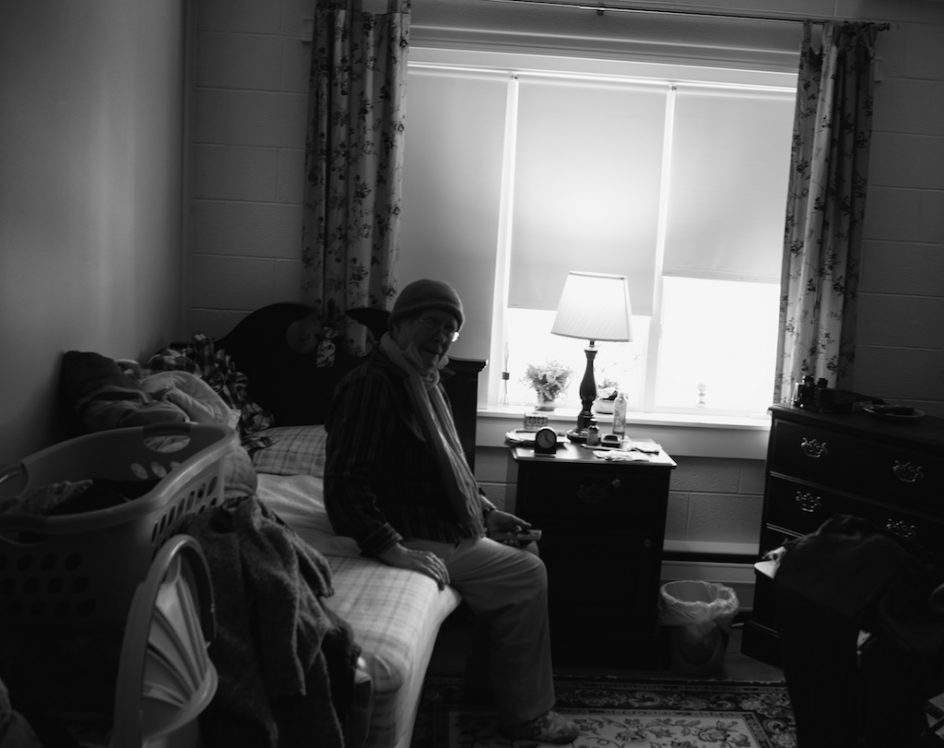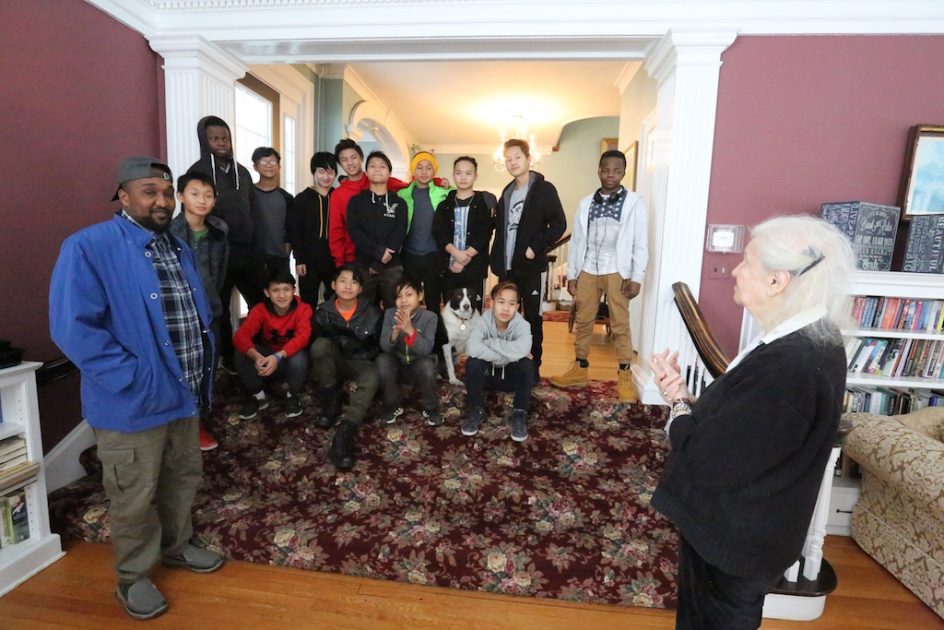I saw the most beautiful breakthrough since I started my reading program at the Mansion, using reading2connect stories and workshop books.
The books were written by Susan Ostrowski and Dr. Peter Diamond to help the elderly restore memory, find voice and read independently.
Until today, it was just me working with Joan and some others. It was going very well, but I wanted to go farther. And today, we did, much farther.
Joan has severe memory loss but has become deeply engaged in reading these workshop books. In elder care, people can become passive, are affected by the aging process, medications, and the sometimes restrictive life of the elder care facility.
Reading can be a great help to them, and when people suffer memory loss, they often give up on it. I hope this work helps revive memory and sparks a return to independent, not directed, reading.
At first Joan could not complete any of proverbs int he work book, now she is tearing through the books with humor, insight and confidence. Her stumbles don’t bother her, and she has changed before my eyes more than I might have thought. More and more, she is correcting my mistakes. Two weeks ago, I would not have imagined this video possible. Take a look.
Barb is a resident at the Mansion, an avid reader.
She often gets exasperated with Joan, who can be forgetful and sometimes drifts in out of the moment.
She loses patience with her, and can be abrupt, even cutting, though I doubt she means to be.
My own sense of Barb is that she is highly intelligent, a passionate reader – she reads all day – and is somewhat frustrated by the limitations and stresses of an assisted care facility. She misses controlling her life, and that many not be possible for her again in this life.
Barb sometimes pushes Joan like an impatient parent. Joan is profoundly sweet, she is always trying and my sense of her is that she mostly needs to be encouraged and supported. In my volunteer and hospice work especially, i have learned to accept people for who they are, and try to love them for who and what they are.
I have come to love Joan in this way, we have a real connection, and I admire and respect Barb as I get to know her.
For these reasons, I asked Barb if she would agree to work with Joan and I. As an avid reader, I thought she would connect with this idea, and she did.
Barb and I talked about being patient and supportive – she is very quick, and it is difficult for her to deal with a world that is often slower. She gave me one of her laser-like stares, but i knew she heard me. She wanted to do this work.
She said she understand, she cared about Joan and would be supportive of her.
I have a good relationship with Barb and we talk openly and easily with one another, even if she is in one of her legendary bad moods. And Joan and I have become close and connected, there is great affection between us and we always can communicate with each other.
You can watch the video and see how good this experience was for both of these remarkable women. This is significant for many reasons, one of the most important is that the reading we are doing is drawing in other people. That’s the big idea.
I think Barbara needed to find a way to show the compassion and intelligence that she doesn’t always have a chance to show. When they started reading together, she and Joan clicked in a way I had not seen before, and Barbara was encouraging and engaged. So was Joan.
For the first time, I sat mostly on the sidelines, jumping in occasionally. But it was them doing this reading..
One of the program’s goals is to encourage people in elder care to back away from passive activities like TV and re-engage themselves with the practice of reading, as good for the mind as exercise is for the body. in fact, reading is an exercise of the mind, doctors have found.
Ostrowski and Diamond mean for the people in elder care facilities to eventually read away from staff and volunteers and more by themselves.
This seems to be a step in that direction, Barb, who misses nothing and can be quite organized – she takes care of the parakeets – said she would be happy to continue reading and working with me and Joan. I’m not quite ready to leave them alone yet, but I’m looking for the chance
This is amazing stuff, and I am loving working in this way. We also had rehearsals for our skit, “Night Of Four Skits,” now scheduled for May.I’ll post a video of that rehearsal later tonight. Barb has joined our cast.
It is a wonderful thing for me to see Joan improve and restore some of her memory, it is an amazing thing to be part of it and see it happening. I will keep up this work.
I considered paying for the $3,000 training program meant to go along with these new books, but I have decided against that, at least for now.
There is just way too much going on in my life right now. Friday night, I volunteered to run Bingo Night. I have never played bingo in my life and have no idea how it works. It will be exciting to see.
If you wish to support my work with the Mansion residents, there are lots of needs to fill. This work is made possible by your donations. You can contribute to this work by sending your contribution to Jon Katz. P.O. Box 205, Cambridge, N.Y., 12816, or via Paypal.
Your letters to the Mansion residents are much appreciated (as are your notecards!). The Mansion residents who wish to receive your mail and messages are Winnie, Jean A., Mary, Gerry, Sylvie, John, Diane D., Alice, Jean G., Madeline, Joan, Allan, Bill, John K., Helen, Bob, Alanna, Bob, Barb, Peggie, Dottie, Tim, Debbie, Art, Guerda, Brenda, Wayne, Kenneth, Ruth. The address is The Mansion, 11 S. Union Avenue, Cambridge, N.Y., 12816.




